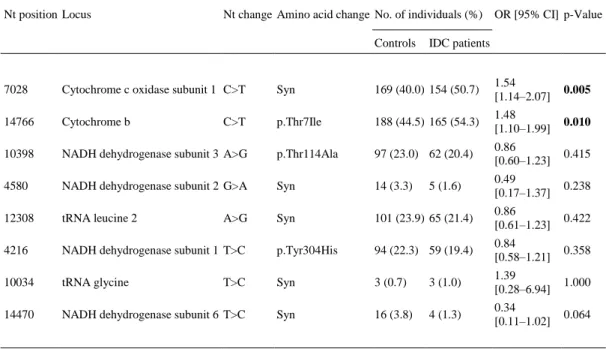TítuloMitochondrial DNA haplogroup H as a risk factor for idiopathic dilated cardiomyopathy in Spanish population
Texto completo
Figure




Documento similar
Detection of Trypanosoma cruzi DNA in blood by PCR is associated with Chagas cardiomyopathy and disease severity.. Eur J Heart
The formation of mitochondrial reactive oxygen and nitrogen species may lead to endothelial dysfunction by the activation of the vascular and phagocy- tic NOXs through protein kinase
A central role in this attenuation is played by the mitochondrial transcription termination factor (mTERF), a DNA-binding protein that protects a 28 bp region within the tRNA
ΔCm, mitochondrial membrane potential; AMPK, AMP-activated protein kinase; ERK 1/2, extracellular signal-regulated kinase 1/2; IF1, ATPase inhibitory factor 1; IF1 KO , IF1
Key words: Drugs of abuse; senescence; mitochondrial DNA; stem/progenitor cell proliferation; lipofuscin..
The overexpression of IF1 in HCT116 cells (Figure 1C) resulted in decreased oxidative phosphorylation (OSR) (Figure 1D), mitochondrial hyperpolarization (Figure 1E) and a
In this review we will briefly summarize: (i) the sites of production, mechanism of action and signaling pathways that are activated by ROS and (ii) the role of the mitochondrial H
More recently, we have described that over-expression of IF1 in cells with negligible content of the protein results in the inhibition of the ATP synthetic activity of the H +